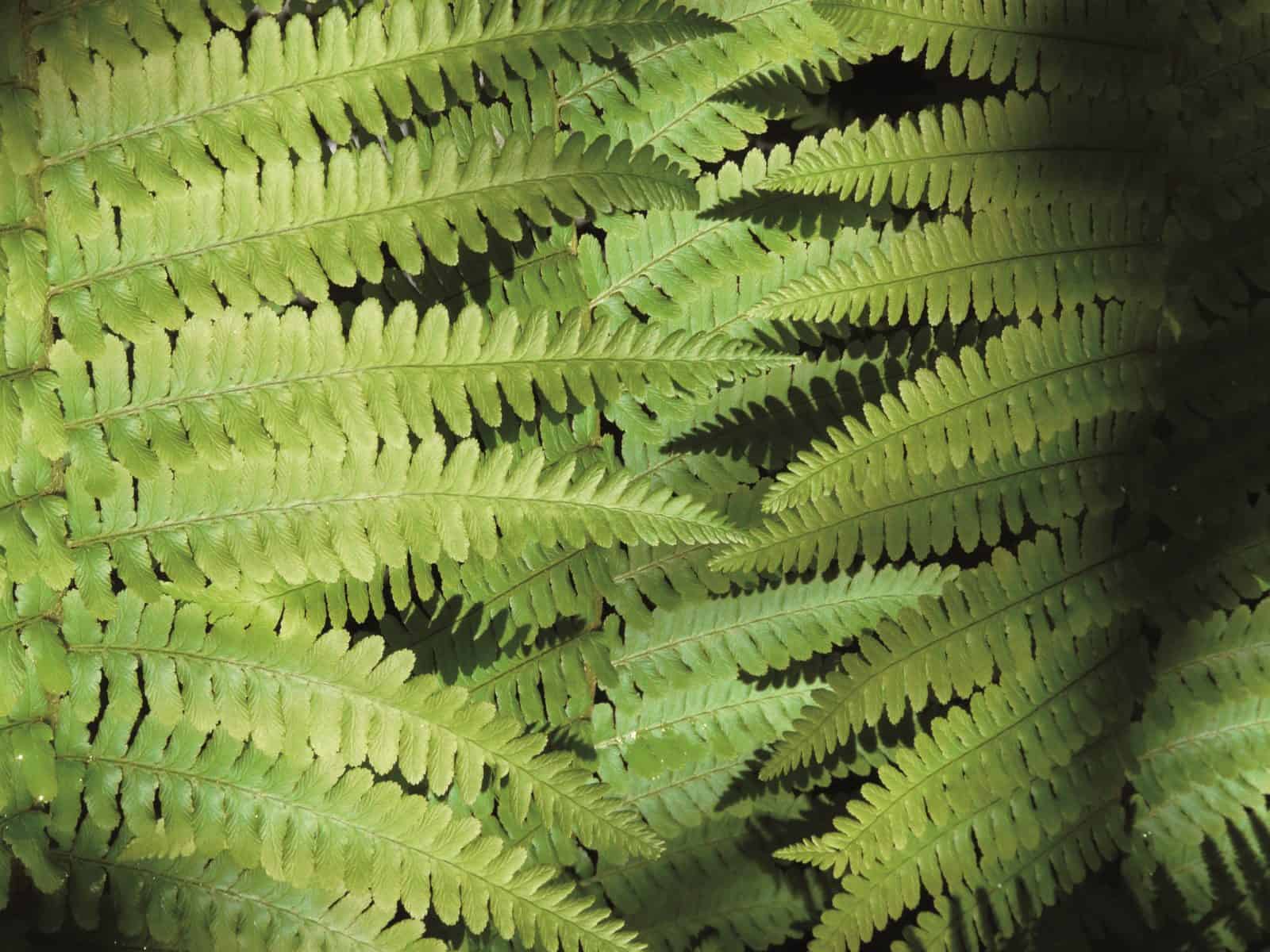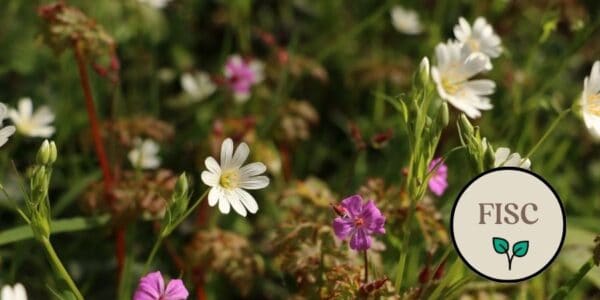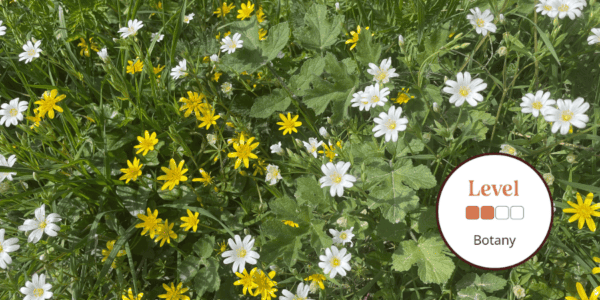This course will provide you with a scientific introduction to the identification of higher plants, use and construction of keys, preparation of voucher specimens, plus surveying and recording.
After the basics of botanical identification have been learnt and common species identified, there are still large groups of plants that are tricky or difficult to identify. Many of these either belong to large groups of similar looking species (e.g. Rosa, Salix), have complex taxonomy that requires expertise to unravel (e.g. Sorbus) or have small or complicated structures that require more specialist knowledge to ascertain (e.g. Cyperaceae, Juncaceae, Poaceae, Equisetum). You will be learn which groups contain Apomitic and Apogomous species, and how this complicates field and laboratory identification.
Key skills to be developed include identification of a range of families and groups typically including sedges, grasses, pteridophytes (ferns and their allies), umbellifers, yellow composites and crucifers. Groups will be covered in sessions introducing main characteristics and how to interpret them using keys – the groups that you will focus on depend on the season to an extent. You will also explore construction of dichotomous and other types of key, recording critical taxa, surveying and recording of difficult plants, and an example of how to cover a very challenging group such as whitebeams. The preparation of plant specimens on herbarium paper to produce archive-quality voucher specimens will also be covered!
Your course will take place at the Preston Montford Centre which is nestled in the heart of Shropshire and surrounded by a diverse natural environment to immerse yourself in. You will embark on a field visit to a local site, where you will observe different habitats, practice using species keys and looking at family characteristics.
There are three booking options which all include course tuition, meals and refreshments:
Tutor: Mark Duffell
Mark Duffell has had a lifetime interest in plants, gaining the RHS Diploma in Horticulture and completing an MSc in Biological Recording. He now runs Arvensis Ecology, splitting his time between conducting botanical surveys and teaching botanical identification and survey techniques to undergraduate and postgraduate students, consultancies and environmental organisations.Tutor: John Warren
Professor John Warren has a degree in Plant Biology from Newcastle University and a PhD in Plant Evolutionary Genetics from York University. His work has mainly focused on agri-botany, including sowing wild oats, and collecting rare varieties of chocolate around the Caribbean. He was professor of Agri-Botany at Aberystwyth before moving to become Vice Chancellor of the University of Natural Resources and Environment in Papua New Guinea. He was involved in establishing Botanical University Challenge and is still involved in running it. He is author of many papers and books including: The Agri-Environment, The Nature of Crops, and Frustrating Flowers and Puzzling Plants. The last book is a guide to the UKs difficult plants, it is due to be published early in 2023.
Example Timetable
Example Timetable
This timetable is subject to change but should give an outline of what to expect.
If you have booked accommodation with the Centre your bedroom will be ready from 3.00pm onward on the day of arrival and we ask that you vacate by 9.30am on the morning of departure.
If numbers are sufficient a station pick up will be arranged at 5.30pm from Shrewsbury Station.
Please arrive in time for the evening meal at 6.30pm on Friday
The course starts after dinner with a classroom session 7.30pm - 9.00pm
The course ends at 4.00pm on the final day.
Friday: 18:30-21:00. (Teaching will begin after dinner at around 19:30): Introduction to what makes a plant difficult to identify.
Over the whole course we will look at a range of difficult taxa which may include Grasses, Sedges, Rushes, Roses, Yellow Composites, some of the Brassicaceae and Pteridophytes.
Typical timings for each group to be looked at is around 3 hours, then the focus will change to a new group.
Saturday, Sunday and Monday follow similar formats.
Starting in the morning with an introduction to a difficult group, looking at a range of specimens, introducing the main keys to each group, and taking time to practice these skills.
There will be tea breaks, and breaks for lunch and dinner.
There will be a field visit on the Sunday afternoon, approximately 13:30-17:00, weather and season dependent.
In the evenings, a range of practical workshops and lectures will take place.
This course will involve field work and classroom activities. Field visit on Sunday will include a trip to either Sweeney Fen or another field site.
What's Included
What’s included?
- Classroom learning covering the theory of the subject
- Field excursions to apply new knowledge
- Expert tuition for whichwe are renowned
- Clear objectives and progression
- All meals provided
You can rest assured that the absolute best content from an expert in environmental education will be provided. In choosing this course, you will be joining thousands of people who learn with us each year.
PLEASE NOTE For course bookings including full board accommodation, please note bathroom facilities maybe be shared
Before You Attend
There will be a member of staff with first aid training and access to a first aid kit on site. If you have special medical or access requirements, please let us know as soon as possible so we can make any necessary adjustments.
What to Bring
- You should bring a x 20 hand lens (or at the very least a good quality x10 lens).
- As you will be taking notes in the field, a weather-proof notebook or Weatherwriter is required and some sample bags (Ziplock freezer bags) are useful.
- If you have a copy of Stace’s Field Guide this will be very useful although there will be some to borrow for the duration of the course.
- A sandwich box, flask and/or water bottle and a bag to carry your kit.
Recommended Reading
- Field Stace is the most useful text, followed by The Plant Crib – others listed below are useful but not essential
- Jermy A.C., Chater A.O. & David R.W. 1982. Sedges of the British Isles. BSBI.
- Meikle R.D. 1984. Willows and Poplars of Great Britain and Ireland. BSBI.
- Rich T & Jermy A.C. 1998. Plant Crib 1998. Botanical Society of the British Isles (BSBI).
- Rose F. 2006. A Wildflower Key. Warne.
- Stace C.A. 1999. Field Flora of the British Isles. CUP.
- Tutin T.G. 1980. Umbellifers of the British Isles. BSBI.
Sorry this course booking is closed



